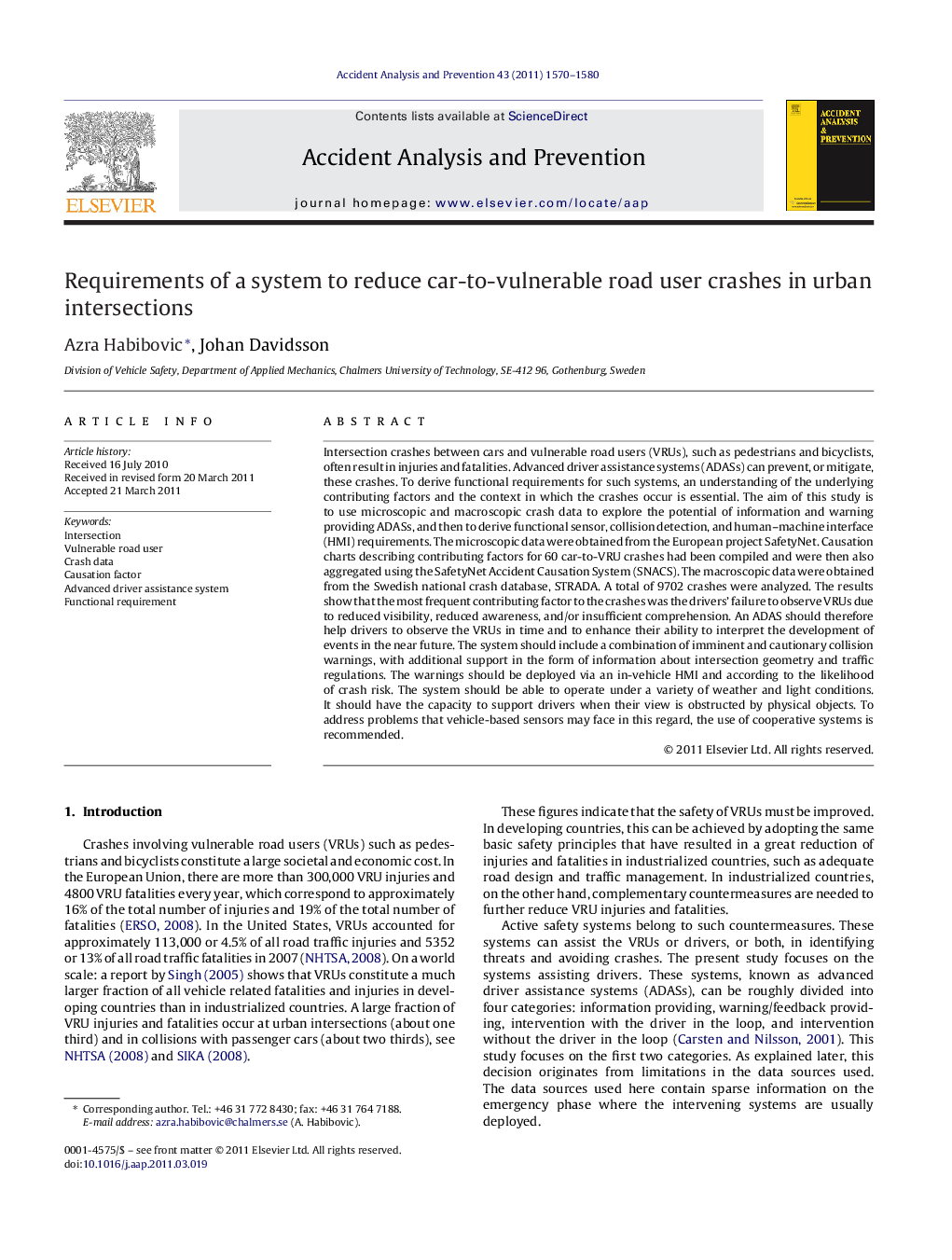| کد مقاله | کد نشریه | سال انتشار | مقاله انگلیسی | نسخه تمام متن |
|---|---|---|---|---|
| 573020 | 877387 | 2011 | 11 صفحه PDF | دانلود رایگان |

Intersection crashes between cars and vulnerable road users (VRUs), such as pedestrians and bicyclists, often result in injuries and fatalities. Advanced driver assistance systems (ADASs) can prevent, or mitigate, these crashes. To derive functional requirements for such systems, an understanding of the underlying contributing factors and the context in which the crashes occur is essential. The aim of this study is to use microscopic and macroscopic crash data to explore the potential of information and warning providing ADASs, and then to derive functional sensor, collision detection, and human–machine interface (HMI) requirements. The microscopic data were obtained from the European project SafetyNet. Causation charts describing contributing factors for 60 car-to-VRU crashes had been compiled and were then also aggregated using the SafetyNet Accident Causation System (SNACS). The macroscopic data were obtained from the Swedish national crash database, STRADA. A total of 9702 crashes were analyzed. The results show that the most frequent contributing factor to the crashes was the drivers’ failure to observe VRUs due to reduced visibility, reduced awareness, and/or insufficient comprehension. An ADAS should therefore help drivers to observe the VRUs in time and to enhance their ability to interpret the development of events in the near future. The system should include a combination of imminent and cautionary collision warnings, with additional support in the form of information about intersection geometry and traffic regulations. The warnings should be deployed via an in-vehicle HMI and according to the likelihood of crash risk. The system should be able to operate under a variety of weather and light conditions. It should have the capacity to support drivers when their view is obstructed by physical objects. To address problems that vehicle-based sensors may face in this regard, the use of cooperative systems is recommended.
Journal: Accident Analysis & Prevention - Volume 43, Issue 4, July 2011, Pages 1570–1580